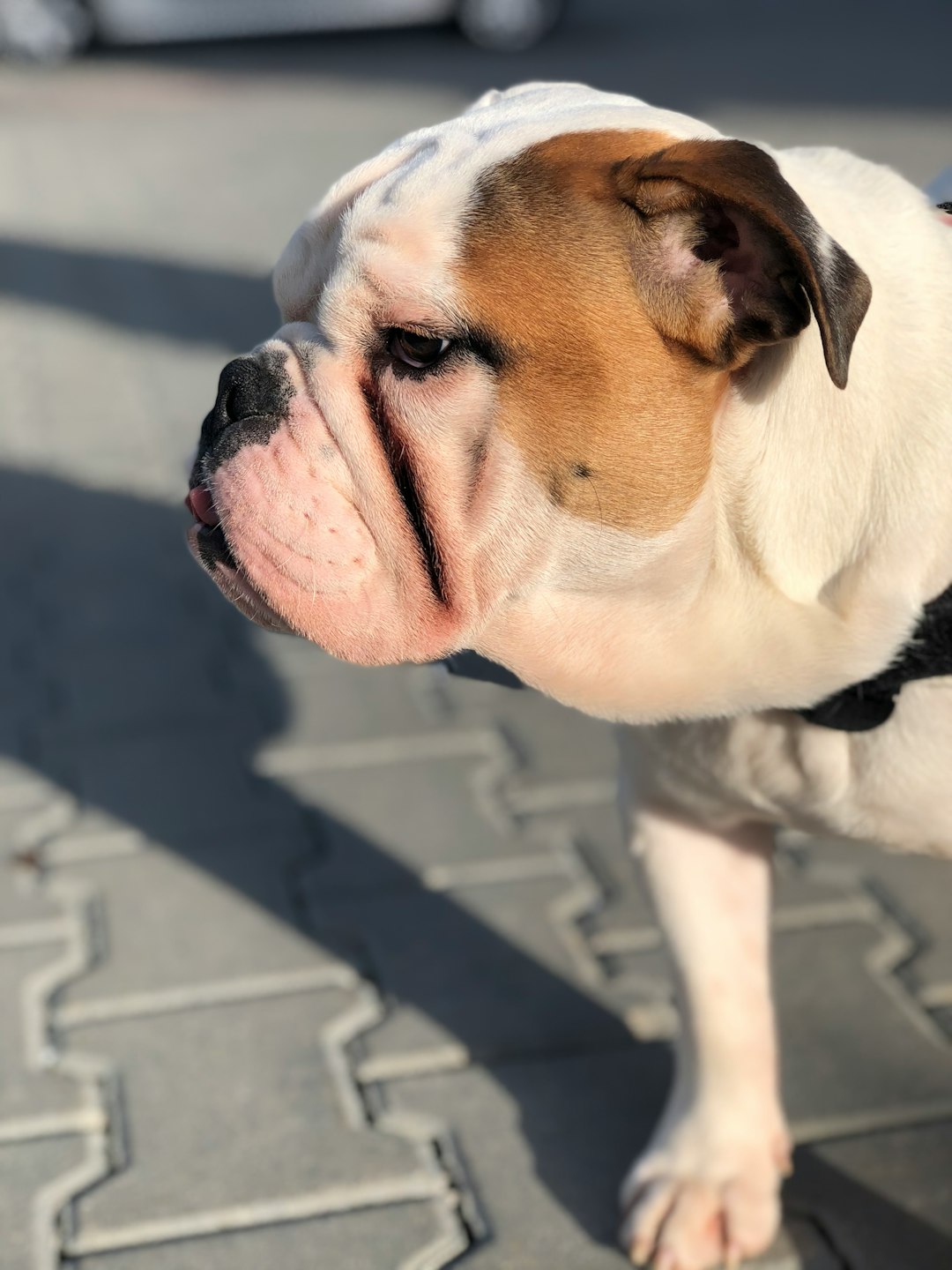Ever found yourself staring at a tube of Neosporin, pondering, “Can I put Neosporin on my dog?” Well, you’re not alone! Many pet parents grapple with this question when their furry friend gets into a bit of trouble. While it seems like a quick fix for minor wounds, it’s crucial to tread carefully. Let’s dive into the world of Neosporin, explore its safety, and uncover some alternatives that will keep your canine companion happy and healthy—without any pesky side effects!
Understanding Neosporin and Its Ingredients

So, you stumbled upon that little tube of healing goodness called Neosporin and thought, “Can I put Neosporin on my dog?” Well, let’s break it down!
Neosporin is a popular over-the-counter antibiotic ointment known for its triple action of keeping cuts and scrapes infection-free. Here’s what’s in it:
- Bacitracin: Fights bacteria.
- Neomycin: Another antibiotic that zaps those pesky germs.
- Polymyxin B: A bacteria-fighting superstar.
Individually, these ingredients are effective; together, they create a shield against nasty invaders. But hold your horses! Just because it works wonders for humans doesn’t mean it’s a go-to for your furry friend.
In fact, while dogs can have emergencies that make you wonder, “Can I put Neosporin on my dog?” the answer isn’t as simple as a tail wag. 🐾 Understanding what Neosporin is made of is crucial before slathering it on your pup. Keep reading to see where Neosporin fits in your dog’s healing regimen!
Is Neosporin Safe for Dogs?

So, the burning question remains: Can I put Neosporin on my dog? Well, the answer isn’t as straightforward as a simple ‘yes’ or ‘no’. Let’s break it down:
Pros:
- Minor Wound Treatment: Neosporin may help in treating small cuts and scrapes, providing a moisture-rich environment that aids healing.
- Antibacterial Properties: It contains ingredients that may inhibit bacterial growth.
Cons:
- Allergic Reactions: Dogs might be allergic to one or more components in Neosporin—think skin irritation, redness, or even rashes.
- Ingestion Risk: If your pup decides to lick it off, it could cause gastrointestinal discomfort or other issues.
In Summary:
- Use for minor injuries? Yes, but proceed with caution.
- Possible side effects? Absolutely, be on guard!
Now, before you go slathering Neosporin on Fido, remember, consulting your veterinarian is vital for the best guidance on whether Can I put Neosporin on my dog is a wise choice! Avoid the guesswork and let the pros weigh in!
Common Uses of Neosporin in Veterinary Care

So, you’re probably wondering, “Can I put Neosporin on my dog?” Well, let’s dive into the common uses of this topical ointment!
Neosporin serves as a classic remedy in veterinary care for minor wounds and scrapes. Here’s how it helps:
- Promotes Healing: The antibiotic ingredients in Neosporin can help alleviate minor infections, supporting your dog’s recovery.
- Prevents Infection: Applying it on small cuts can keep those pesky bacteria away, preventing further complications.
However, always use caution. Neosporin is not a one-size-fits-all solution. Consider these alternatives for certain conditions:
| Condition | Neosporin | Alternative Options |
|---|---|---|
| Minor Cuts and Scrapes | Yes | Honey, Aloe Vera |
| Burns | Not Recommended | Burn-specific ointments |
| Deep Wounds | No | Consult your vet |
| Allergic Reactions | Avoid | Vet-prescribed treatments |
In conclusion, “Can I put Neosporin on my dog?” can often get a thumbs up, provided your furry friend isn’t at risk for side effects. Always monitor for any unusual reactions!
Potential Risks and Side Effects of Neosporin on Dogs
So, before you reach for that trusty tube of Neosporin, let’s chat about some potential risks. After all, asking “Can I put Neosporin on my dog?” isn’t just about the yes or no; it involves a bit of detective work!
Here are some things to consider:
- Allergic Reactions: Just like us, dogs can throw a fit against certain ingredients. Keep an eye out for swelling or itchiness.
- Toxicity: Neosporin contains a blend of ingredients that might not be dog-friendly, especially if ingested. Yikes!
- Ineffectiveness: Neosporin can’t tackle all wounds. For example, deep cuts or puncture wounds may require professional help instead of DIY ointment—sorry, Fido!
Quick Comparison: Neosporin vs. Vet Recommended Remedies
| Aspect | Neosporin | Vet-Recommended Remedies |
|---|---|---|
| Allergic Risks | Moderate | Low |
| Toxicity | Possible | Minimal |
| Efficacy for Severe Wounds | Variable | High |
While the allure of “Can I put Neosporin on my dog?” may tempt you, always weigh these risks carefully. Consult your veterinarian to keep your pup safe and healthy!
When to Use Neosporin on Your Dog
So, you’ve found yourself pondering, “Can I put Neosporin on my dog?” Well, the answer is not as straightforward as you might think. Here’s a quick guide to help you decide when it’s appropriate to reach for that little tube of ointment.
When It’s a Go:
- Minor Scrapes and Cuts: If your dog has a small, superficial wound, a dab of Neosporin can help keep it moist and free from infection.
- Post-Surgical Care: After veterinary procedures, applying a thin layer (as per your vet’s advice) can soothe your pup’s skin.
When to Hold Back:
- Deep Wounds: If you see muscle or bone, leave it to the experts.
- Infections or Abscesses: Never play doctor with infections; always consult your vet.
- Allergic Reactions: If your dog has shown sensitivity to similar creams, it’s best to avoid Neosporin altogether.
By knowing when to use Neosporin on your dog, you can help keep your furry friend safe while giving them the care they deserve!
How to Properly Apply Medication to Your Dog
Applying medication to your furry friend may seem daunting, but with a sprinkle of patience (and a good treat), it becomes a walk in the park! So, let’s roll up those sleeves and dive into the how-to of making sure your pup gets the care they need. Here’s how you can safely apply Neosporin — or any medication — to your dog.
- Prepare the Area: Choose a quiet spot where your dog feels comfortable. This can be their favorite blanket or even your lap!
- Clean the Wound: Gently wash the affected area with mild soap and water. This removes dirt and helps Neosporin work its magic.
- Dry It Off: Pat the area dry with a clean cloth. Remember, no one enjoys a soggy bandage!
- Apply the Medication: Use a clean finger or a cotton swab to apply a small amount of Neosporin. Less is often more — you don’t need a meltdown when a glob of ointment takes center stage!
- Distract Your Dog: Give them a treat or play a game to keep their mind off the application.
- Observe: After applying, keep an eye on your pet for any adverse reactions. Ask yourself, “Can I put Neosporin on my dog?” — it’s always good to monitor!
With these tips, you’ll be well-equipped to help your furry friend heal safely!
How to Properly Apply Medication to Your Dog
So, you’ve pondered the question, Can I put Neosporin on my dog? Now that you’ve got some medication, it’s vital to know how to apply it correctly. Your furry friend has a tendency to twist and turn—think of them as a little acrobat! Let’s ensure your application is smooth and effective with these steps:
- Clean the Wound: Always start by cleaning the area with mild soap and water. Get rid of dirt and debris like an expert!
- Pat Dry: Use a clean towel to gently pat the wound dry. No one likes a soggy band-aid!
- Apply the Medication: If you’ve decided that Neosporin is the right choice (after considering its safety for dogs), apply a small amount directly onto the wound. Use your clean fingertip or a cotton swab.
- Avoid Licking: Cover the area with a bandage or use an Elizabethan collar if your pup is a frequent licker. We don’t want our little friends turning the medicine into their next chew toy!
- Monitor Progress: Check the wound daily for any signs of infection. If you notice unusual redness or swelling, it’s time to revisit the first question: Can I put Neosporin on my dog?
With proper application, you’ll help your pet heal while keeping them safe!
Consulting Your Veterinarian for Best Practices
When it comes to your pup’s health, consulting your veterinarian is always a paw-sitive step. You might be wondering, “Can I put Neosporin on my dog?” While it might seem like a quick fix, it’s wise to get a professional opinion first. Here are some reasons why:
- Tailored Advice: Every dog is unique, with individual health considerations that could affect the safety and efficacy of Neosporin.
- Wound Assessment: A vet can more accurately assess the type of wound and recommend the best treatment options.
- Avoiding Risks: Your vet will help you avoid potential side effects associated with Neosporin, ensuring your furry friend stays safe.
In a nutshell, a quick chat with your veterinarian can save you and your pooch from unnecessary complications. So next time you ponder, “Can I put Neosporin on my dog?” remember that your vet holds the key to your dog’s optimal healing process! 🐾
Frequently Asked Questions
Is it safe to put Neosporin on my dog?
Ah, the classic veterinary conundrum! While Neosporin might be a go-to for your scrapes and cuts, it’s not exactly a ‘one-size-fits-all’ solution for our furry friends. Technically, a little dab won’t send your dog into a tailspin, but it can cause gastrointestinal upset if ingested. Additionally, some dogs might be sensitive to the ingredients, leading to rashes or irritation. Always consult your vet first – we wouldn’t want to turn a simple boo-boo into a major drama!
What are the alternatives to Neosporin for my dog’s wounds?
Great question! When it comes to alternatives, nature has your back – and so do some fantastic pet products! Consider using aloe vera gel (just make sure it’s pure and safe for pets), honey (not just for tea, it’s great for wounds), or specific pet-safe antiseptic sprays available at your local pet store. These options tend to be gentler on their delicate skin while still packing a punch against infection. Remember, a vet visit is always a smart alternative, too!
How do I apply a topical ointment on my dog?
Ah, the art of doggy dermatology! Applying ointment can be a bit like trying to place a hat on a hyperactive puppy. First, ensure the area is clean and dry. Apply a thin layer of ointment on the wound, and try to distract your pooch with treats or playtime while you’re doing it. If your furry companion tries to lick it off – which they probably will, it’s best to use an Elizabethan collar (the infamous cone of shame) until it soaks in and does its magic!
What signs should I look for if my dog has a reaction to Neosporin?
You definitely want to keep an eagle eye for any signs that your dog isn’t their usual happy-go-lucky self. Watch for excessive scratching, redness, swelling, or rashes around the application site. If they suddenly decide to dine on the ointment (hilarious yet alarming), keep an eye on their tummy troubles like vomiting or diarrhea. If any of these occur, it’s time to dial your vet – or run faster than you ever have if it’s a semi-serious issue!



